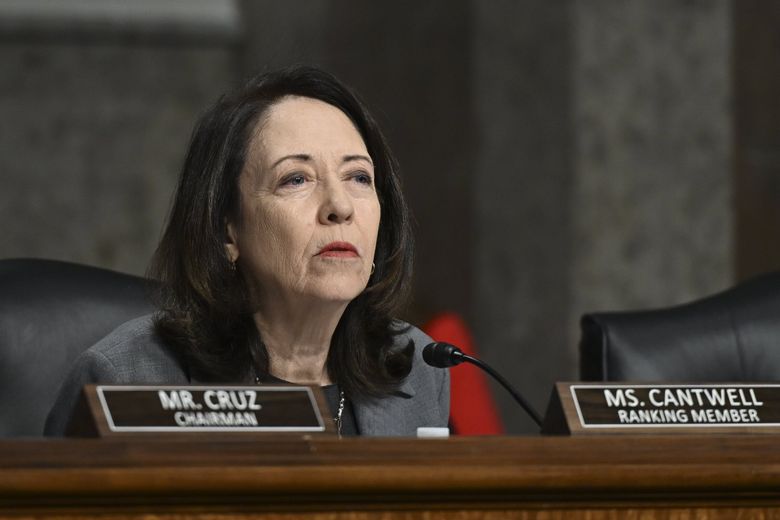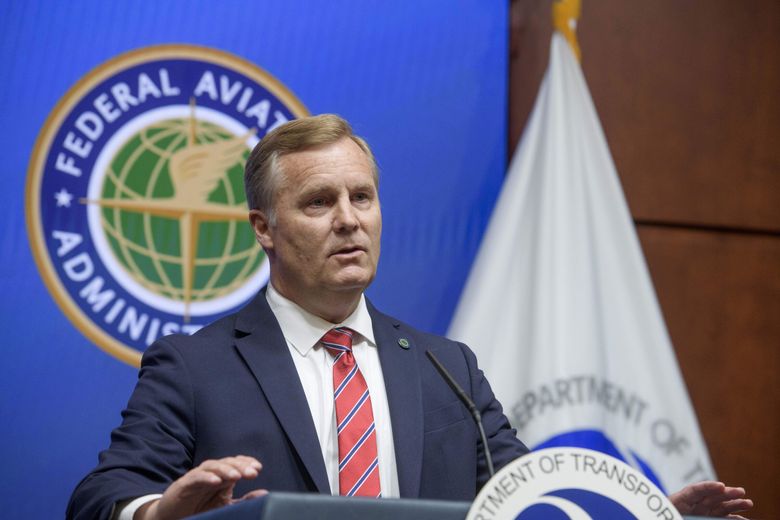Safety regulators will continue allowing Boeing to self-certify some inspections, repairs, and other work in its factories, extending a controversial oversight program for another three years.
The Federal Aviation Administration said Thursday that it had renewed Boeing’s oversight authority after “rigorous reviews” showed the company had addressed concerns that Boeing had too much influence over its own oversight.
But U.S. Sen. Maria Cantwell, D-Wash., who has previously been critical of the program, said Friday she remains worried the FAA has not fully addressed known shortfalls with the oversight program.
“We still do not have enough answers from the FAA,” Cantwell said in a written statement.
The program, Organization Designation Authorization, or ODA, is meant to ease the FAA’s workload and create more standard oversight of aerospace manufacturers. Through it, the FAA deputizes company employees to perform tasks on behalf of the FAA, like inspecting work on new airplanes and approving repairs.
But Boeing’s program has been heavily scrutinized after failing to work as intended, with FAA-deputized Boeing employees reporting that they felt pressured to act in the interests of their employer and feared retaliation if they raised safety concerns.
“The FAA must ensure schedule pressures cannot take priority over safety and must have a system that backs ODA unit members,” Cantwell said Friday.
Two fatal 737 MAX crashes in 2018 and 2019 brought intense attention to allegations of undue pressure on Boeing workers performing audits for the FAA and prompted the safety regulator to put new safeguards in place.
Several technical experts inside the FAA told The Seattle Times in 2019 that the first of those deadly crashes was the latest indicator that the agency’s delegation of airplane certification had gone too far. In that instance, a safety analysis Boeing delivered to the FAA for a new flight control system had several crucial flaws, leaving out details about how the system operated.
On Thursday, the FAA said it had “closely monitored specific criteria” before making the decision to renew Boeing’s oversight authority, and “saw improvements in most areas.”
Those criteria included implementing policies to prevent Boeing from interfering with ODA unit members and monitoring those employees’ ability to complete projects independently. The criteria also required Boeing to “follow through” on findings from its self-audits.
“The FAA will continue to closely monitor Boeing’s performance throughout its renewal period,” the agency added.
A spokesperson for Boeing said the company remains “committed to working under the agency’s detailed and rigorous oversight.” Boeing, the spokesperson continued, has taken “purposeful steps to strengthen our ODA program over the past three years in alignment with FAA requirements, and we will continue those improvements.”
Before the FAA’s decision this month, Cantwell, the ranking Democrat on the Senate committee overseeing the FAA, pushed the agency to closely analyze whether Boeing had addressed “critical concerns” identified by the FAA the last time the company’s oversight authorization was up for renewal, in 2022.
At that time, the FAA extended Boeing’s program for three years, rather than the standard five, and said it wanted to see “necessary improvements,” according to an April letter Cantwell sent to acting FAA Administrator Chris Rocheleau.
At a Senate hearing with Boeing CEO Kelly Ortberg the next day, Cantwell also cast blame on the FAA for falling short of its mandate, even after being notified of concerns from the National Transportation Safety Board.
The Senate is “getting a big sense that the NTSB makes recommendations and the FAA kind of ignores them,” Cantwell said at the hearing.
The FAA still holds some oversight authority for Boeing.
After the two fatal MAX crashes and a quality issue with Boeing’s 787 Dreamliner, the FAA retained its authority to issue airworthiness certificates for those planes, rather than allowing the manufacturer to perform the final inspection itself. The airworthiness certificate grants approval for that plane to fly.
In August 2023, the FAA considered allowing Boeing to once again complete the final airworthiness check, according to a report from the Transportation Department’s inspector general. But that request was never fulfilled, and the FAA still oversees the final inspection for new 737 and 787 aircraft.
As the FAA was considering handing more control back to Boeing, a 737 MAX 9 fuselage that would later lose a panel midflight was traveling through the company’s supply chain. Investigators examining the January 2024 blowout later determined that the panel was missing four bolts meant to hold it in place. Boeing mechanics had removed the bolts in the company’s Renton factory to fix another defect with the plane.
Cantwell said in her April letter to the FAA that the request to redelegate final airworthiness certification authority at the same time production issues were traveling through Boeing’s factory was “troubling.”
It hired an ombudsperson to act as a neutral third party to address employee concerns, added more employees to the unit who could perform tasks on behalf of the FAA, and improved its “pipeline” to address retirements.
A 2024 Boeing-led survey of employees who performed certification tasks on behalf of the FAA found that roughly 9% of respondents said they had experienced perceived interference in 2024, down from 12% a year earlier and 14% in 2022.



